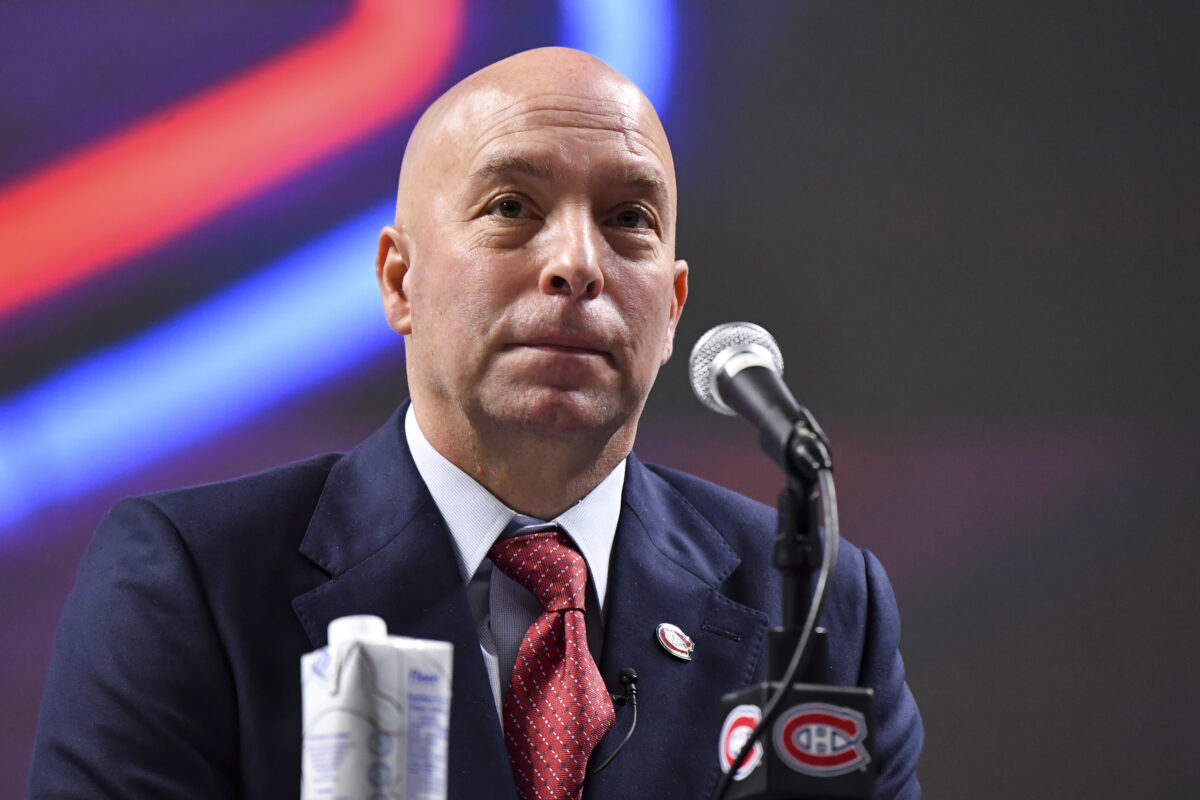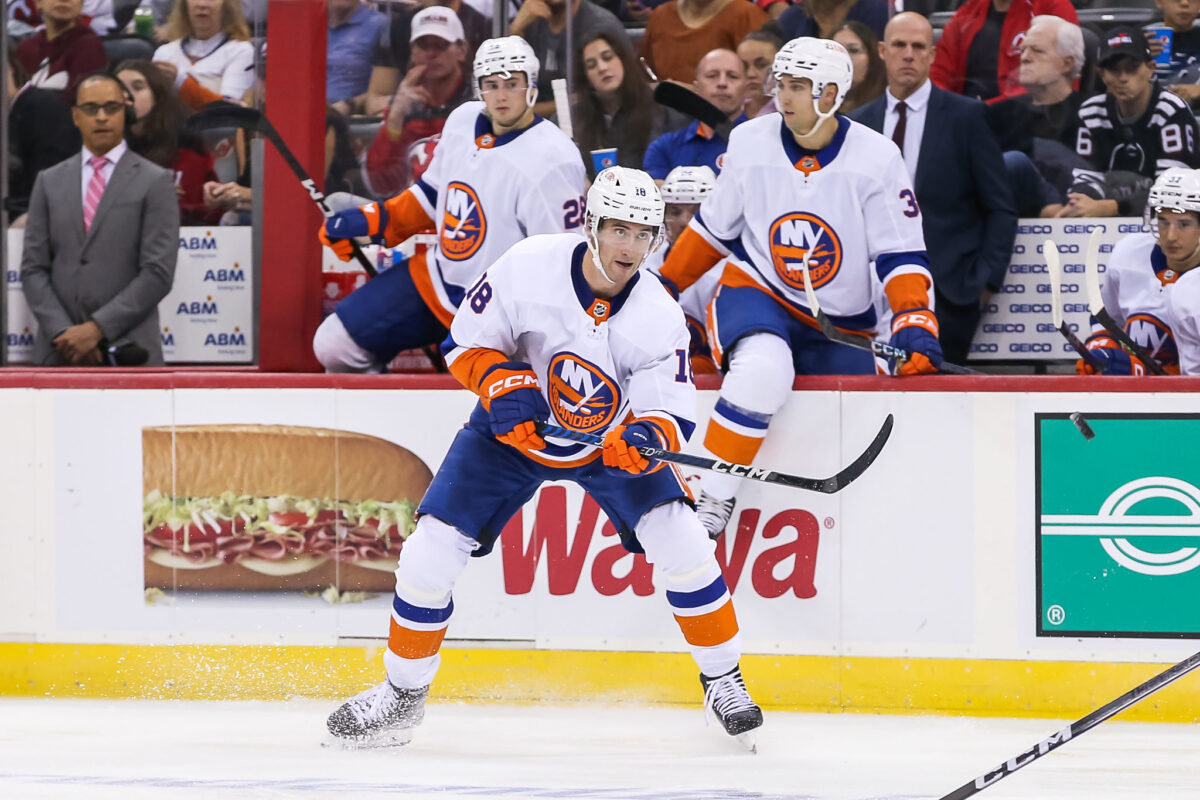As the NHL offseason continues, each team’s direction, plans, and goals for the coming season have become clear. For the Montreal Canadiens, the 2024-25 season will take the next step of the rebuild. Under Hockey Hall of Famer and head coach Martin St. Louis, youth development is at the forefront of the team’s priorities. Under fellow Hockey Hall of Famer and head coach Patrick Roy, the New York Islanders will be attempting to build on last season’s growth in hopes of bringing home the fifth Stanley Cup in franchise history. Despite being in two strikingly different directions, Islanders’ general manager (GM) Lou Lamoriello and Canadiens’ GM Kent Hughes share many similarities.
Similar Philosophies, Differing Execution
The most apparent similarity between Hughes and Lamoriello is their philosophies in contract negotiations. Both GMs are confident in their players and take pride in the product they send on the ice each night. Because of this, they each want to maintain their core and reward loyalty by handing out long-term contracts filled with no trade clauses. Where the two GMs differ is in execution.
Hughes has done a fantastic job of locking up the Canadiens’ young core for the future. 2022 first-overall draft pick Juraj Slafkovsky is signed for the next nine seasons, captain Nick Suzuki is signed for six, Cole Caufield is signed for seven, and Kaiden Guhle is signed for seven. Outside of recently turned 25-year-old Suzuki, the other three are just 22 or younger, paving the way for the Canadiens to maintain control of their young core through their primes. These four contracts total under $30 million in annual cap hit, allowing the team to lock up its young core at an affordable price to eventually sign additional elite talents.
For Lamoriello, the philosophy is nearly the same. Currently, the Islanders have 13 players signed to contracts with trade restrictions, and eight players signed for four or more seasons. The only issue here is the roster’s average age is nearly 29 years old, among the highest in the NHL. Many of the players with long-term contracts are either 30 years old or defensemen, a position that typically doesn’t age well. Additionally, the current Islanders’ roster lacks young talent on par with Slafkovsky or Caufield and aside from Cole Eiserman, the prospect pool doesn’t offer much excitement.
Finding Value
Another similarity and difference between these two GMs is how they find value. In the 2024 Draft, Ivan Demidov, an arguable top-2 talent in the class, fell to the Canadiens at fifth overall. While taking Demidov was an obvious decision, Hughes has continuously drafted with a “best player available” mindset, differing from previous Canadiens’ GM Marc Bergevin who notoriously reached for Jesperi Kotkaniemi at third overall in 2018. This is not to say Hughes has ignored positions when drafting, but he has not let it cloud his judgment.
Related: Every NHL Team’s Breakout Candidate in 2024-25
Despite making minimal draft selections throughout his six-year tenure thus far, Lamoriello has employed a similar strategy at the NHL Draft each year. In 2018, he selected Noah Dobson and Oliver Wahlstrom with his first-round picks, followed by Aatu Räty, Calle Odelius, and Danny Nelson—each projected as late first-round picks—in the second rounds of the 2021, 2022, and 2023 Drafts. Though Lamoriello hasn’t been flawless, as seen in his 2019 decision to draft Simon Holmstrom 23rd overall when Philip Tomasino, Connor McMichael, or Long Island native Shane Pinto might have been better choices, he has generally drafted well.
While both GMs have discovered value in the draft, their approaches to creating value through contracts differ significantly. Hughes, with his background as a former agent, understands the crucial role of contract negotiations. Every player has a specific value, and using negotiation strategies—such as no-trade clauses or extended terms—can secure contracts at a cost lower than that value. Building a Stanley Cup-winning team isn’t just about acquiring elite talent but also maximizing cost-efficiency across the roster, and Hughes is committed to that belief.

Outside of Sergei Bobrovsky, the entire 2024 Stanley Cup-winning Florida Panthers’ roster was paid at team-friendly or fair-dollar value. This is especially true for players like Brandon Montour, Oliver Ekman-Larsson, and Sam Reinhart who all earned significant paydays this offseason. Hughes has cost-effectively signed his rising stars to perfection, signing Caufield, Slafkovsky, Suzuki, and Guhle to long-term deals that will either be fair value or steals.
Of course, there is risk in signing someone like Guhle to a six-year extension, but considering he is just 22 years old and has already proven he can handle top minutes in the NHL, the risk was worth taking. With each of these four players’ AAVs already being fair value, it is hard to envision a world where any of them are deemed “overpaid”.
Hughes’ strategy has created a clear timeline in the late 2020s for the Canadiens to be aggressive in free agency or on the trade market, potentially opening a decade-long contention window. Plus, the team will have elite talent like Demidov, David Reinbacher, Lane Hutson, Joshua Roy, and others breaking through in the NHL on their entry-level contracts by this time.
Like Hughes, Lamoriello has also signed his core to long-term deals, but arguably none are at a team-friendly price. Mat Barzal and Bo Horvat were recently signed to eight-year extensions, but neither deal can be considered team-friendly. A few years ago, Adam Pelech and Ryan Pulock were extended on long-term contracts, and both have not only spent months on injured reserve but have also begun to show signs of decline.
Lamoriello’s missteps are perhaps most evident in the extensions given to Scott Mayfield and Pierre Engvall. Both players had career seasons before re-signing with the Islanders and have already shown that they may not have been worth the lengthy contracts they received.
Understanding of Timelines
The real issue with Lamoriello’s contracts is his mismanagement of the Islanders’ contention timeline. During the Islanders’ deep 2020 and 2021 playoff runs, the team consisted of multiple team-friendly contracts with Dobson ($832,464), Mayfield ($1.45 million), Barzal ($7 million), Pelech ($1.6 million), Ilya Sorokin ($2 million), Devon Toews ($700,000), and others making well below their market value. This is why the team was able to add talent each season through additions like Jean-Gabriel Pageau and Kyle Palmieri, even with overpays like Nick Leddy ($5.5 million) and Cal Clutterbuck ($3.5 million).
Yet, the day the Islanders extended Mayfield and Engvall to seven and six-season contracts, respectively, the team lost all future cap flexibility since Lamoriello showed a clear misunderstanding of the Islanders’ contention window. Even if Mayfield and Engvall’s contracts were a team-friendly annual average, the term guaranteed the final three to four seasons of these deals to be unbearable. Of course, their combined $6.5 million cap hit alone is not enough to hinder any future cap flexibility, but the idea of paying two depth players into their mid-30s is mind-boggling.

In Montreal, Hughes has shown a complete understanding of the roster’s abilities and timeline. Even with a Stanley Cup Final loss in 2021 just after Hughes took over, he knew this core did not have what it took to take home Lord Stanley. So, he began a rebuild, prioritized player development, and avoided long-term contracts.
Now the Canadiens have arguably the best prospect pool in the NHL, no long-term deals on aging players, and an elite crop of young talent signed at a team-friendly price. While the next couple of seasons may continue to disappoint, the late 2020s to early 2030s will almost definitely have the Canadiens as one of the premier contenders for a Stanley Cup. As well, the construction of the roster has secured the team will have a prolonged window due to the deep prospect pool as opposed to the Islanders’ two-year run.
With the Islanders and Canadiens in vastly different situations this season, comparing each team’s approach is interesting. Because of Hughes’ commitment to a rebuild, Canadiens fans get to follow an exciting young group with a promising future this season. On Long Island, Islanders fans will have to hope their veterans can have career years, otherwise, another season of the Lamoriello era will be wasted.
